We may call them alternative bricks, Lego-compatible bricks, brick building toys, Lego clones, etc but it all expresses the same basic idea: an element not manufactured by The Lego Group. Are they good? Do they harm consumers or The Lego Group? Read on.
Tyco Super Blocks in the 1980s
As a kid in the 1980s I was introduced to Lego and Lego-compatible alternatives at the same time. My parents blessed me with many classic Lego space kits including much of the Blacktron 2 line. I have a lot of great memories of these kits and parts.
I also have great memories of the Tyco Super Block parts that my parents bought- and many of those parts are in the kit that my kids play with today. (Although, I will say a lot of the Tyco parts were pretty terribly designed. The metal pinned wheels were annoying to assemble. And some of the parts, like the triangle bricks, are confusing to use.)
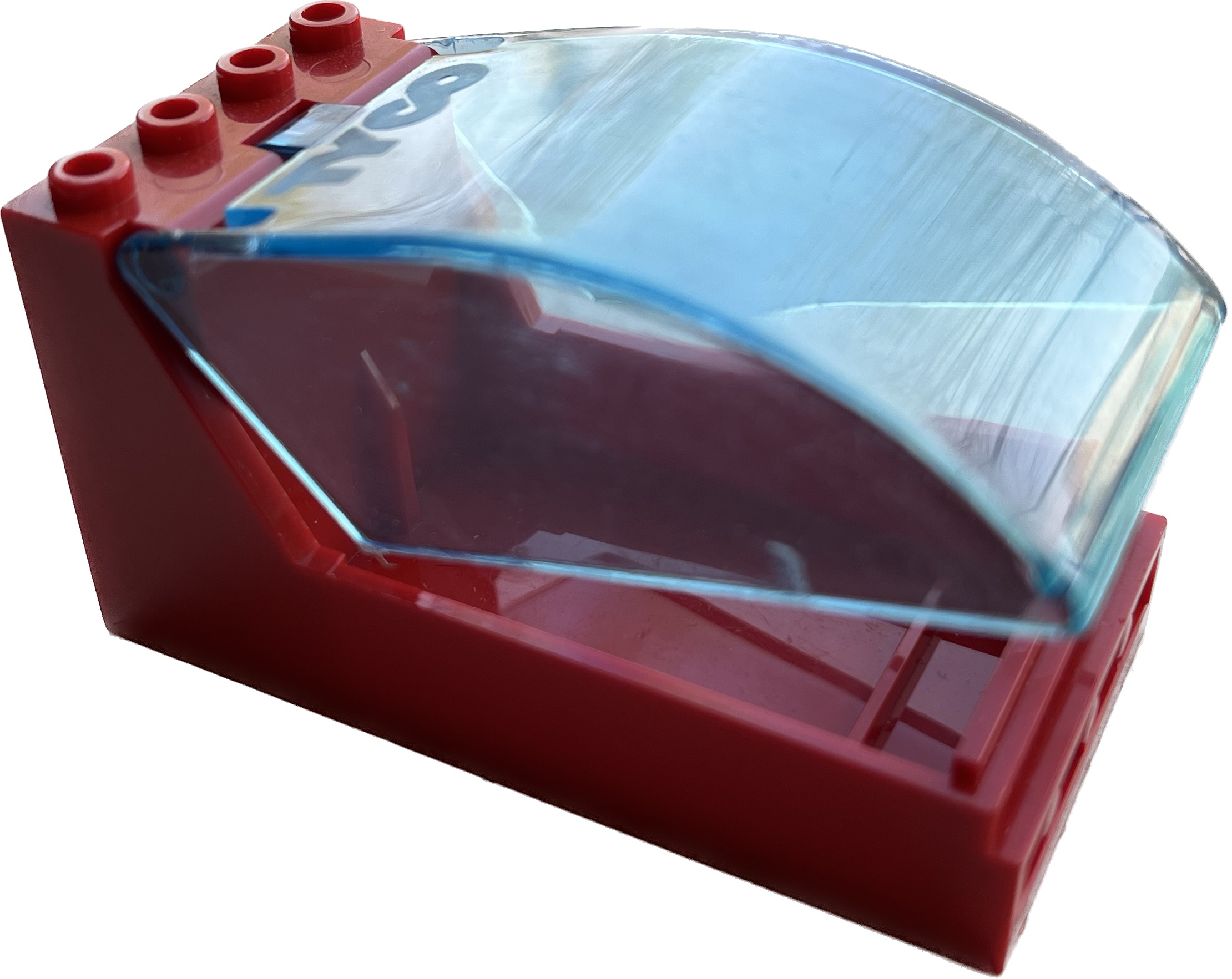
The Tyco cockpit that my kids still play with today
This brand from my childhood, Tyco, ended up winning against Lego in 1986 (see Building a Legal Case, Block by Block) which lead the way for Mega Blocks to emerge in the early 1990s.
Lego’s Intellectual Property
Philosophically, I do believe that anyone should be able to manufacture Lego system compatible elements. Quite simply the Lego brick should belong to the all people on the planet at this point. Why? Because, the purpose of our intellectual property laws, like copyright and patents, is to incentivize invention by giving people a limited monopoly on an idea. And the Lego patents expired decades ago so Lego Group’s monopoly on this intellectual property, rightfully, should end. The intent and purpose of patent/copyright expirations is to enable society to build on top of inventions and as a result lower prices and increase availability for consumers.
To illustrate the importance of being able to build on the inventions of others look no further than the history of… the Lego brick patents. The Lego patents build upon a design first introduced in Britain by Harry Fisher Page and a company called Kiddicraft (see Great Britain patent #529580). Lego improved on this design in a variety of ways; most notably in the “tube” patent (see US patent 3005282).
The Lego Group puts a bit of an interesting spin on this story with their history website:
A Briton, Hilary Fisher Page, and his company Kiddicraft has invented the plastic bricks that Ole Kirk and his son Godtfred are presented with. In the late 1950s, the LEGO Group contacts Kiddicraft to ask whether they object to the LEGO® brick. They do not. On the contrary, they wish the company good luck with the bricks, as they have not enjoyed much success with their product. In 1981, the LEGO Group purchases the rights to the Kiddicraft bricks and trademark from the descendants of Hilary Fisher Page.
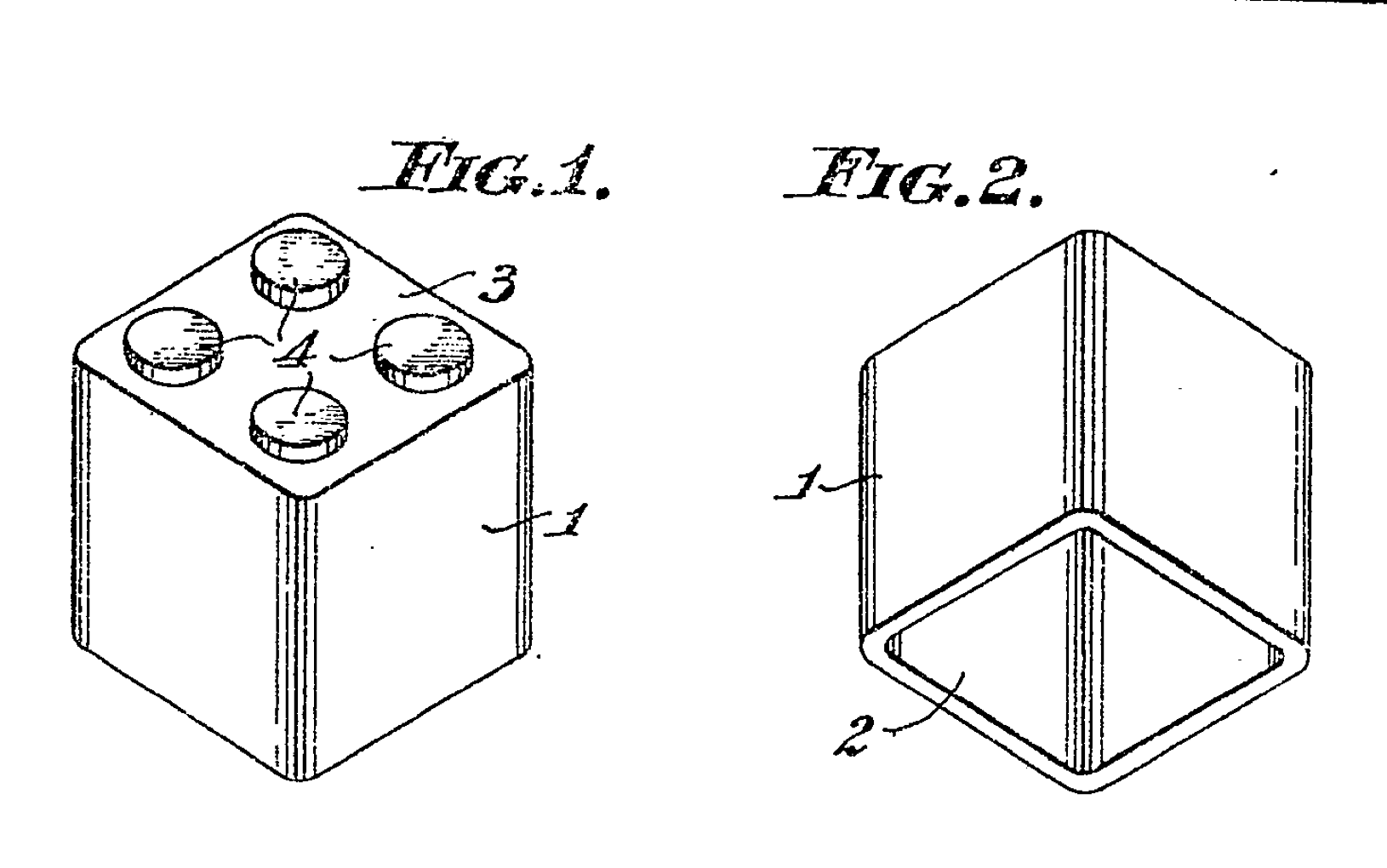
The patent illustration from Kiddicraft / Harry Fisher Page in 1940s
Unfortunately, like Disney, Lego has developed a litigious zeal and has started to use creative tools to protect its intellectual property. In particular, like Disney, they have started to shoehorn their copyrights and patents into trademarks. Trademarks, because of their purpose to help consumers identify brands and companies they trust, last forever. And obviously if your copyright or trademark has expired shoehorning it into a legal framework that never expires is in your interest. For example, even though the Lego block patent has been expired, Lego has attempted to use trademarks on the design instead (see Mega v. Lego). This is all very similar to how Disney is trying to shoehorn Mickey Mouse into a trademark as the copyright on Mickey ends in 2024.
Overall, I find this sort of intellectual property behavior pretty repugnant.
The Edge of Artistic Expression
I do not support cloning non-functional aspects of Lego products. For example, I don’t think it is OK that brands are copying Lego set designs, prints/stickers, and instructions 1-for-1. But, the minifigure is an example of a fuzzy edge where reasonable people can disagree on whether it is functional and patentable or an artistic expression that should fall under copyright.
The Lego minifigure was patented in 1978 in the US and that patent has expired (see US Design Patent 253711).
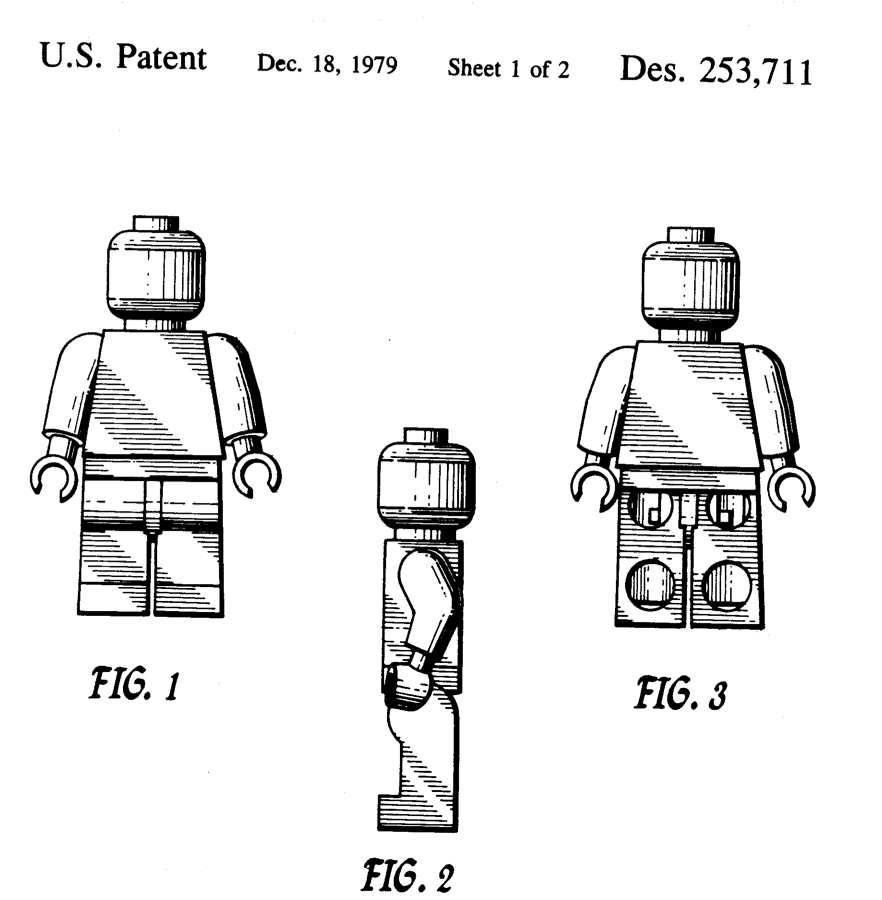
The patent illustration for the Lego minifigure.
However, since that minifigure patent expired The Lego Group has brought different cases across the world under copyright law instead. For example, Lego won a case in 2020 against a company called Zuru (see Lego v Zuru January 15, 2020) which was making a line of action figures that were in the same scale as the Lego minifigure. The court uses this test to decide whether Zuru was infringing on the Lego minifigure copyright:
The standard test for substantial similarity between two items is whether an “ordinary observer, unless he set out to detect the disparities, would be disposed to overlook them, and regard [the] aesthetic appeal as the same.” If “an average lay observer would recognize the alleged copy as having been appropriated from the copyrighted work,” then the two products are substantially similar.
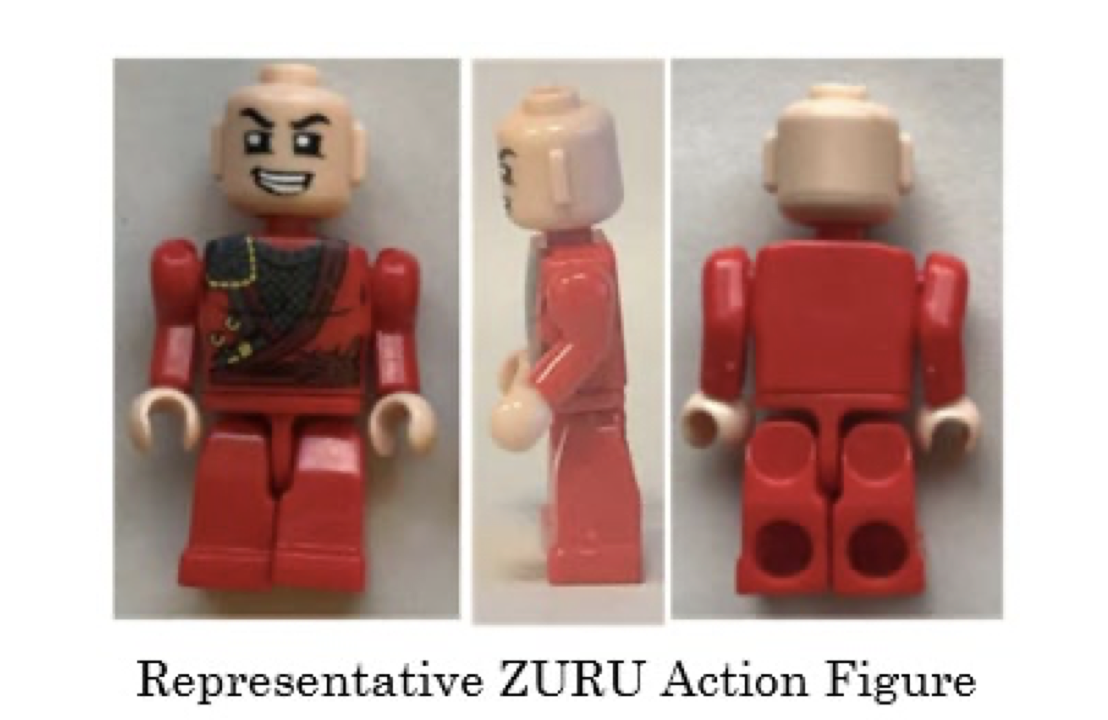
A representative Zuru action figure. Does it meet the standard of substantially similar? The court said yes.
Closing Thoughts
I love Lego. I think they build great toys and the Lego community is a river of creativity. I will continue to buy their products. I also think we have a responsibility to critique the companies we support. And in this case I think Lego is abusing their market position and, in some cases, the intent of the intellectual property legal system.
That said it isn’t all on Lego: the length of Copyright in the United States is out of control at 95 to 120 years. The intent of copyright is for a limited monopoly on creative works. And, frankly, if I can’t make a copy of stories, movies, or toys from my childhood to give to my grandchildren before I die without breaking the law then the copyright length is too long. The original length of 28 years still feels right for this obvious use case.
My hope for the future is that Lego continues to build great toys. I also hope they get their pricing under control; there continues to be a noticeable rise in Lego set prices and sizes which I know prices some folks out of the hobby. Further, for MOC builders, I hope they improve their pick a brick offering to enable CSV/XML/LDR part inventory upload.
The only way I think Lego will get their pricing and features under control is they see threats from the alternative brands. So, I hope those brands continue to push them to compete. And I hope our intellectual property laws start implementing shorter expiration timelines too.
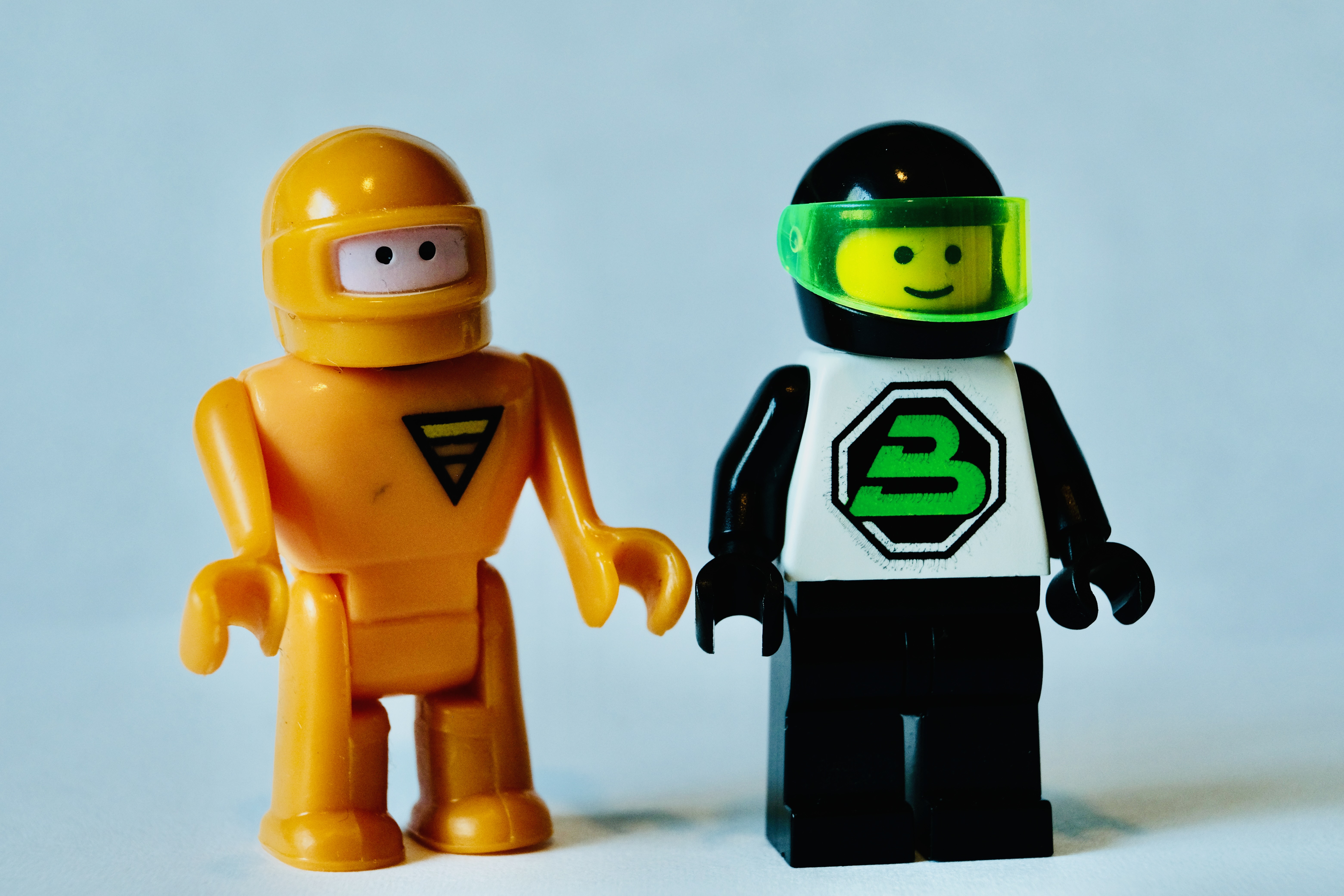
My childhood minifigures: Tyco space figure and Lego Blacktron figure.
Other Resources
- The LEGO BRICK in the Borderzone Between forms of Protection (archive)
- The Chaotic Evolution of LEGO Bricks… by SpitBrix
- Lego Clone on Wikipedia
- The Lego Case T-515/19: A building block castle built up on sand
- The LEGO Group wins final decisions in major intellectual property lawsuits against Lepin manufacturer in China